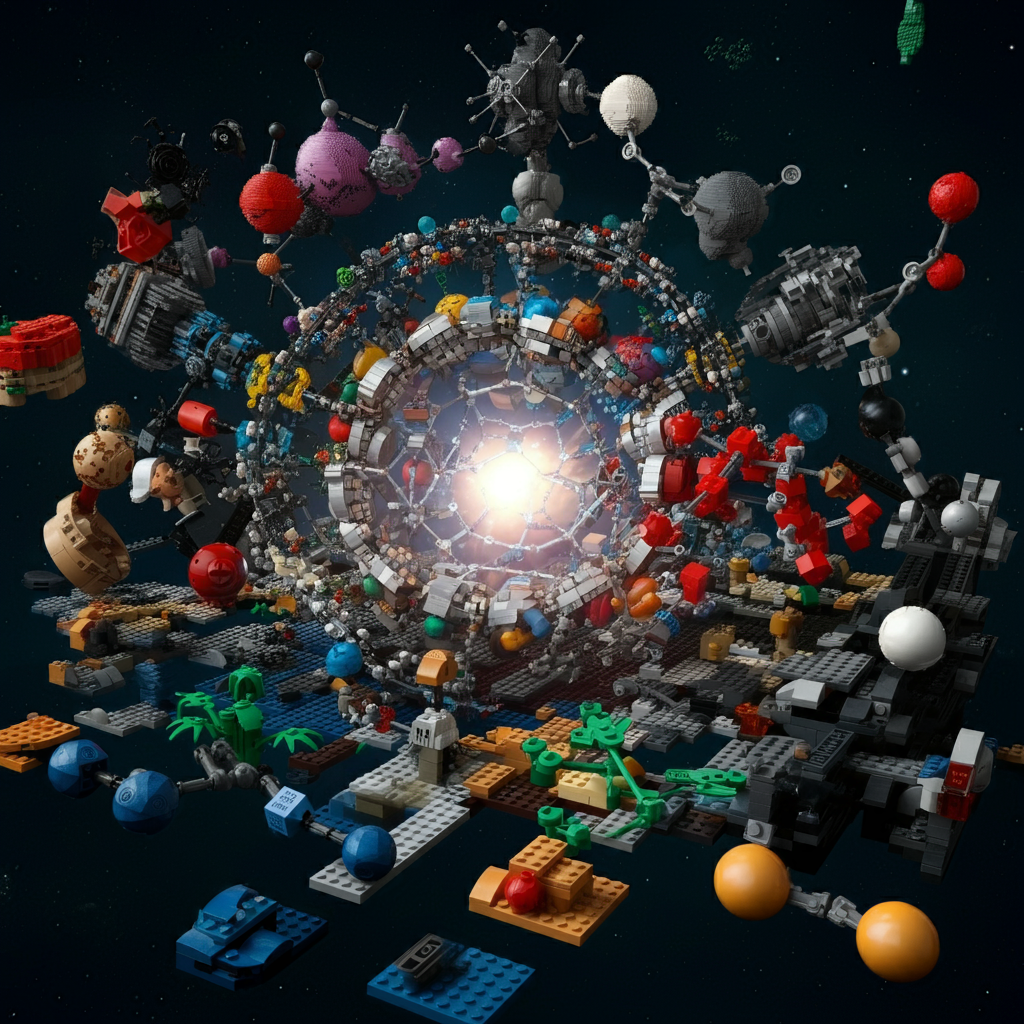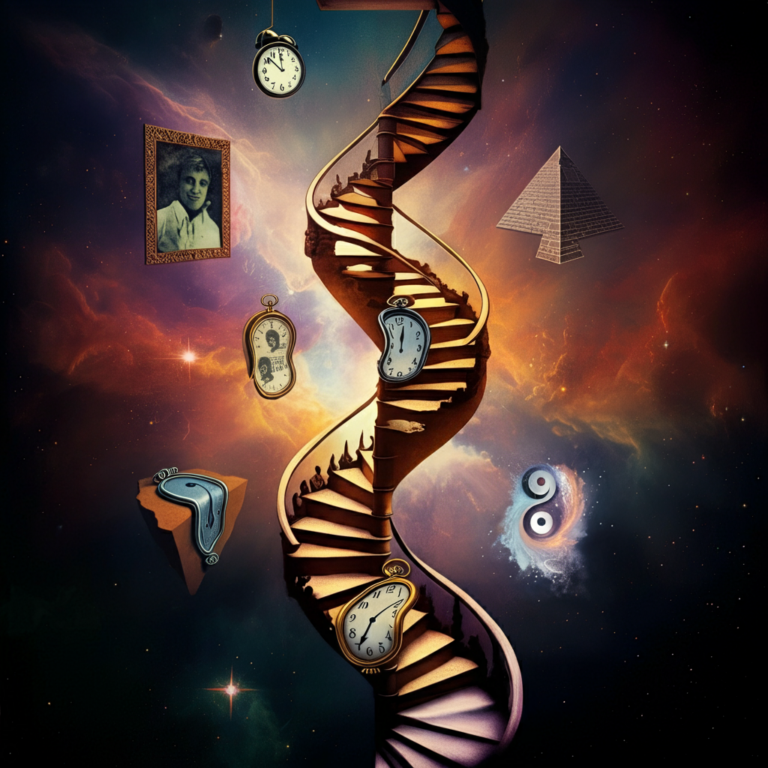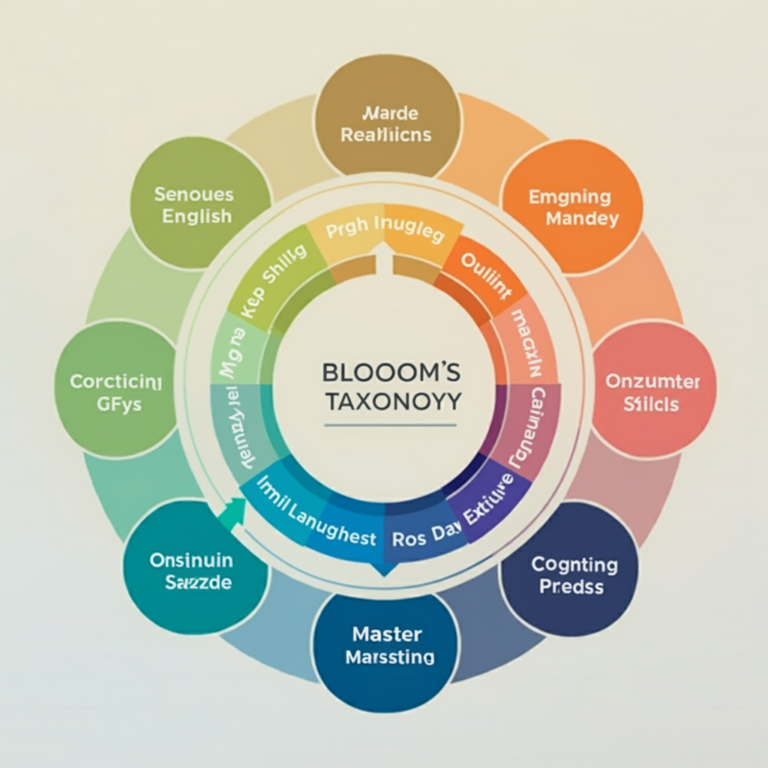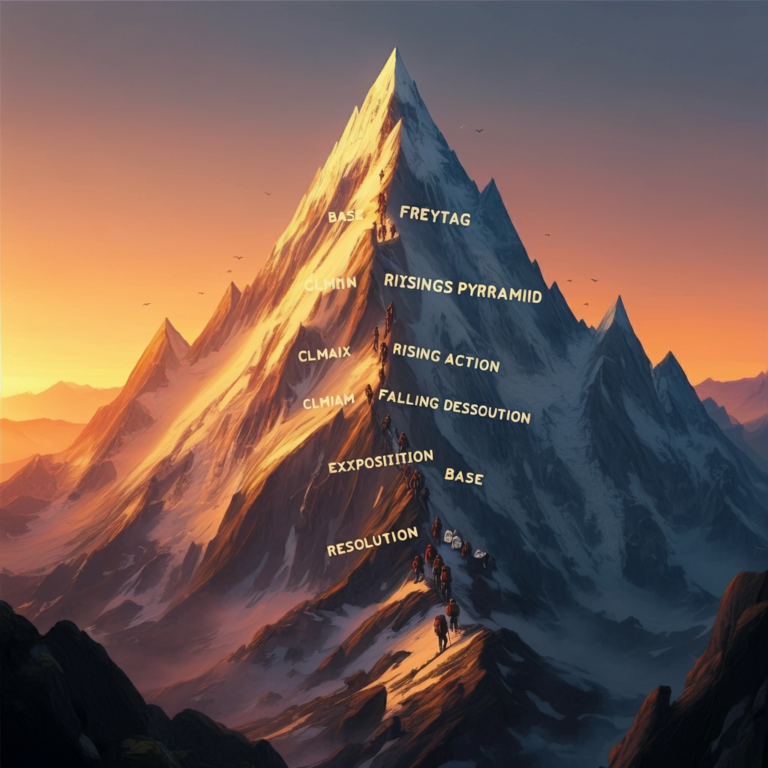A Child’s Guide to the Universe’s Building Blocks
The Standard Model of Particle Physics: A Child’s Guide to the Universe’s Building Blocks
Imagine you have a giant LEGO set, but instead of building houses or spaceships, you’re building the entire universe! That’s kind of what the Standard Model of Particle Physics is all about. It’s like a blueprint that tells us what the universe is made of at the most fundamental level and how these tiny pieces interact to create everything we see and experience.
The Tiny Building Blocks: Fermions and Bosons
Our LEGO set has two main types of bricks: fermions and bosons.
Fermions are like the solid bricks that make up the stuff in our universe. Think of them as the “matter particles.” There are two main types of fermions:
- Quarks: These are like the really sticky bricks that love to clump together. They come in six “flavors”: up, down, charm, strange, top, and bottom. Quarks combine to form bigger particles called hadrons, the most famous of which are protons and neutrons, the building blocks of atomic nuclei.
- Leptons: These are like the smooth, slippery bricks that don’t like to stick together as much. We have six leptons too: the electron, muon, tau, and their corresponding neutrinos (electron neutrino, muon neutrino, and tau neutrino). You’re probably most familiar with the electron, which whizzes around the nucleus of an atom.
Bosons are like the special connector bricks that hold everything together. They are the “force carriers” that mediate the interactions between fermions. We’ll talk more about these interactions later.
The Four Fundamental Forces: The Glue That Holds It All Together
Just like our LEGO bricks need something to hold them together, the particles in the universe need forces to interact. The Standard Model describes four fundamental forces:
- The Strong Force: This is like the super glue of the universe, holding quarks together to form protons and neutrons. It’s also responsible for binding protons and neutrons together in the nucleus of an atom. The strong force is carried by a boson called the gluon.
- The Weak Force: This force is responsible for radioactive decay, a process where some particles can transform into others. It’s like a magic wand that can change the flavor of quarks and leptons. The weak force is carried by three bosons: the W+, W-, and Z bosons.
- The Electromagnetic Force: This is the force that governs interactions between electrically charged particles. It’s responsible for everything from the light we see to the electricity that powers our homes. The electromagnetic force is carried by a boson called the photon.
- Gravity: This is the force that attracts objects with mass towards each other. It’s what keeps us on the ground and what makes planets orbit stars. While gravity is incredibly important in our everyday lives, it’s actually the weakest of the four fundamental forces at the particle level. The Standard Model doesn’t yet have a good explanation for gravity, and scientists are still searching for a hypothetical boson called the graviton that would carry this force.
Putting It All Together: Building the Universe with the Standard Model
So, how does this all work together to create the universe we see?
Imagine you start with a bunch of quarks. The strong force, carried by gluons, binds these quarks together to form protons and neutrons. Then, the electromagnetic force, carried by photons, helps these protons and neutrons come together to form the nucleus of an atom. Electrons, another type of fermion, are attracted to the positively charged nucleus by the electromagnetic force and start orbiting around it.
And that’s just the beginning! Atoms can combine to form molecules, molecules can form cells, cells can form organisms, and so on. All the matter we see around us, from the smallest atom to the largest star, is ultimately made up of these fundamental particles interacting through these four forces.
The Missing Pieces: Beyond the Standard Model
While the Standard Model is an incredibly successful theory, it doesn’t explain everything. There are still some mysteries that scientists are trying to solve, such as:
- Dark Matter and Dark Energy: These mysterious substances make up a large portion of the universe, but we don’t know what they are made of.
- Neutrino Mass: The Standard Model initially predicted that neutrinos should have no mass, but experiments have shown that they do have a very small mass.
- The Hierarchy Problem: The Standard Model doesn’t explain why the weak force is so much weaker than the strong force.
- Gravity: As mentioned earlier, the Standard Model doesn’t include gravity, and we still don’t have a complete quantum theory of gravity.
Scientists are constantly working to expand and refine the Standard Model to address these and other questions. They’re like master LEGO builders, trying to find new bricks and connectors to create an even more complete and accurate picture of the universe.
The Feynman Technique in Action: Identifying Gaps and Refining Understanding
Now, let’s put on our Feynman hats and see how this technique can help us understand the Standard Model better.
Struggles and Missing Details:
- Explaining Quantum Fields: It’s tricky to explain the concept of quantum fields, where particles are seen as excitations of these fields, to someone unfamiliar with quantum mechanics.
- Visualizing the Four Forces: It’s hard to visualize how these forces act at the particle level, especially the strong and weak forces, which operate at incredibly small distances.
- The Higgs Boson: Understanding the role of the Higgs boson in giving mass to other particles can be challenging.
- The Difference Between Fermions and Bosons: Clearly differentiating the properties of fermions and bosons, especially their spin and their role in matter vs. forces, requires careful explanation.
- Connecting the Standard Model to Everyday Phenomena: It’s important to bridge the gap between the abstract concepts of the Standard Model and the tangible world we experience, showing how these fundamental particles and forces give rise to the matter and interactions we observe.
Reviewing and Refining:
After identifying these struggles, I would go back to the source material and focus on the following:
- Quantum Field Theory Basics: Review the basic concepts of quantum field theory to better explain how particles arise from fields.
- Analogies for the Four Forces: Find simple analogies to illustrate how each force works, such as comparing the strong force to glue or the electromagnetic force to magnets.
- The Higgs Mechanism Explained Simply: Break down the Higgs mechanism into simpler terms, focusing on the idea that the Higgs field gives mass to particles that interact with it.
- Fermions vs. Bosons: Key Differences: Create a clear comparison table highlighting the key differences between fermions and bosons, such as their spin, statistics, and role in the universe.
- Real-World Examples: Provide concrete examples of how the Standard Model applies to everyday phenomena, such as how the electromagnetic force allows us to see light or how the strong force keeps the nucleus of an atom together.
By revisiting these points and refining my explanations, I can gain a deeper understanding of the Standard Model and communicate it more effectively.
Delving Deeper into the Standard Model: Exploring Specific Particles and Interactions
Now that we have a basic understanding of the Standard Model’s building blocks and forces, let’s take a closer look at some specific particles and how they interact.
Quarks: The Sticky Bricks of Matter
Remember those sticky quarks that love to clump together? Let’s get to know them better.
- Up and Down Quarks: These are the most common quarks and the lightest. They make up protons and neutrons. A proton is made of two up quarks and one down quark, while a neutron is made of one up quark and two down quarks.
- Charm and Strange Quarks: These are heavier and less stable than up and down quarks. They’re found in more exotic particles that are created in high-energy collisions, like those that occur in particle accelerators.
- Top and Bottom Quarks: These are the heaviest and most unstable quarks. They’re also very rare and only exist for a very short time before decaying into other particles.
Quarks never exist alone. They always combine to form hadrons, which can be either baryons (made of three quarks) or mesons (made of a quark and an antiquark). Protons and neutrons are examples of baryons, while pions and kaons are examples of mesons.
Leptons: The Slippery Particles
Leptons are the more independent particles of the fermion family. They don’t interact via the strong force, which means they can exist on their own.
- Electrons: These are the most familiar leptons and are found orbiting the nucleus of an atom. They’re responsible for the electric current in wires and the chemical bonds between atoms.
- Muons and Taus: These are heavier and less stable versions of the electron. They’re created in high-energy collisions and decay quickly into other particles.
- Neutrinos: These are incredibly light and elusive particles that rarely interact with matter. They come in three flavors: electron neutrino, muon neutrino, and tau neutrino. They’re produced in nuclear reactions, like those that occur in the sun, and can pass through the entire Earth without interacting with a single atom.
Bosons: The Force Carriers
Bosons are the messengers that mediate the interactions between fermions. They’re like the glue that holds the universe together.
- Gluons: These are the carriers of the strong force and are responsible for binding quarks together to form hadrons. They’re like tiny springs that hold the quarks together.
- W+, W-, and Z Bosons: These are the carriers of the weak force and are responsible for radioactive decay. They can change the flavor of quarks and leptons, like transforming an up quark into a down quark.
- Photons: These are the carriers of the electromagnetic force and are responsible for light, electricity, and magnetism. They’re like tiny packets of energy that travel at the speed of light.
- Graviton (Hypothetical): This is the hypothetical carrier of gravity. Scientists are still searching for evidence of the graviton, which would help us understand how gravity works at the quantum level.
Interactions: The Dance of Particles
The interactions between particles are governed by the four fundamental forces. Let’s see how these forces play out in some specific examples:
- Electromagnetic Interaction: When two electrically charged particles, like two electrons, come close to each other, they exchange photons. This exchange of photons creates either an attractive or repulsive force between the particles, depending on their charges.
- Strong Interaction: When two quarks come close to each other, they exchange gluons. This exchange of gluons creates a strong attractive force that binds the quarks together to form hadrons.
- Weak Interaction: When a neutron undergoes beta decay, one of its down quarks transforms into an up quark, emitting a W- boson in the process. The W- boson then decays into an electron and an antineutrino. This process changes the neutron into a proton and is responsible for the radioactivity of certain elements.
- Gravitational Interaction: When two objects with mass, like the Earth and the Sun, are near each other, they exchange gravitons (hypothetically). This exchange of gravitons creates the attractive force of gravity that keeps the Earth orbiting the Sun.
The Feynman Technique: Refining Our Understanding of the Standard Model
Let’s revisit the Feynman Technique and see how we can further refine our understanding of the Standard Model.
Struggles and Missing Details (Revisited):
- Quantum Field Theory and Particle Interactions: Understanding how quantum field theory describes particle interactions, including the creation and annihilation of particles, requires deeper exploration.
- The Role of Symmetry in the Standard Model: The concept of symmetry and how it relates to the fundamental forces and the conservation laws needs further clarification.
- The Limitations of the Standard Model: It’s important to emphasize the limitations of the Standard Model, such as its inability to explain dark matter, dark energy, and neutrino masses.
- The Search for New Physics Beyond the Standard Model: Discussing the ongoing efforts to find new particles and forces beyond the Standard Model, such as supersymmetry and extra dimensions, can broaden our perspective.
- The Implications of the Standard Model for Cosmology and Astrophysics: Connecting the Standard Model to the evolution of the universe and the formation of stars and galaxies can highlight its significance in a broader context.
Reviewing and Refining (Revisited):
To address these remaining challenges, I would focus on the following:
- Quantum Field Theory and Feynman Diagrams: Study Feynman diagrams, a visual tool used to represent particle interactions in quantum field theory.
- Symmetry and Gauge Theory: Learn about gauge theory, which describes how symmetries in the Standard Model give rise to the fundamental forces.
- Beyond the Standard Model: Open Questions: Research the open questions in particle physics and the proposed solutions, such as supersymmetry, extra dimensions, and string theory.
- Cosmology and the Standard Model: Explore how the Standard Model relates to the Big Bang theory, the formation of the early universe, and the evolution of stars and galaxies.
- Experimental Evidence and the Standard Model: Examine the experimental evidence that supports the Standard Model and the ongoing experiments at particle accelerators like the Large Hadron Collider.
By continuing to apply the Feynman Technique, we can deepen our understanding of the Standard Model, its limitations, and the exciting frontiers of research that lie beyond.
Conclusion: The Standard Model as a Work in Progress
The Standard Model of Particle Physics is a remarkable achievement in our quest to understand the fundamental building blocks of the universe and the forces that govern their interactions. It’s a testament to the power of human curiosity and the ingenuity of scientists who have dedicated their lives to unraveling the mysteries of nature.
However, the Standard Model is not the final answer. It’s a work in progress, with many open questions and puzzles yet to be solved. Scientists continue to push the boundaries of knowledge, searching for new particles, new forces, and new theories that can explain the remaining mysteries of the universe.
By embracing the Feynman Technique, we can all participate in this exciting journey of discovery, deepening our understanding of the universe and our place within it. Through continuous learning, questioning, and refining our knowledge, we can unlock the secrets of the cosmos and appreciate the profound beauty and elegance of the Standard Model, a symphony of particles and forces that orchestrate the grand dance of existence.





